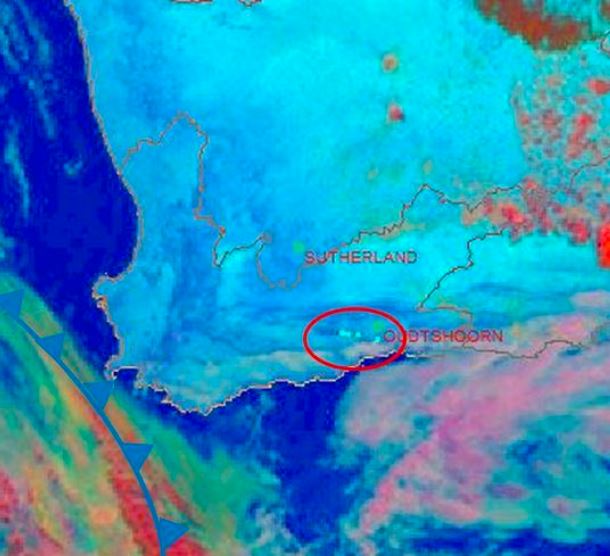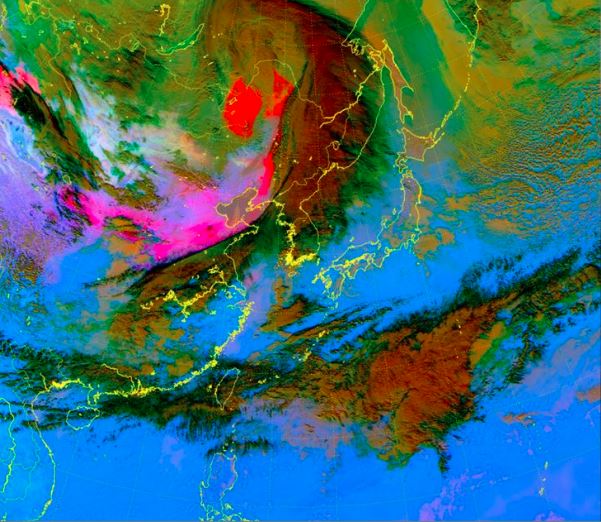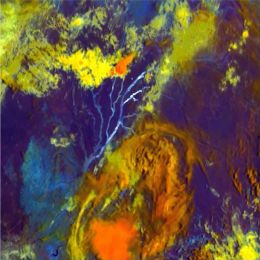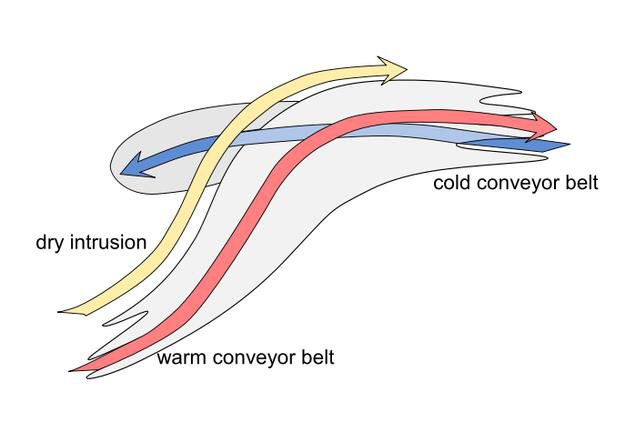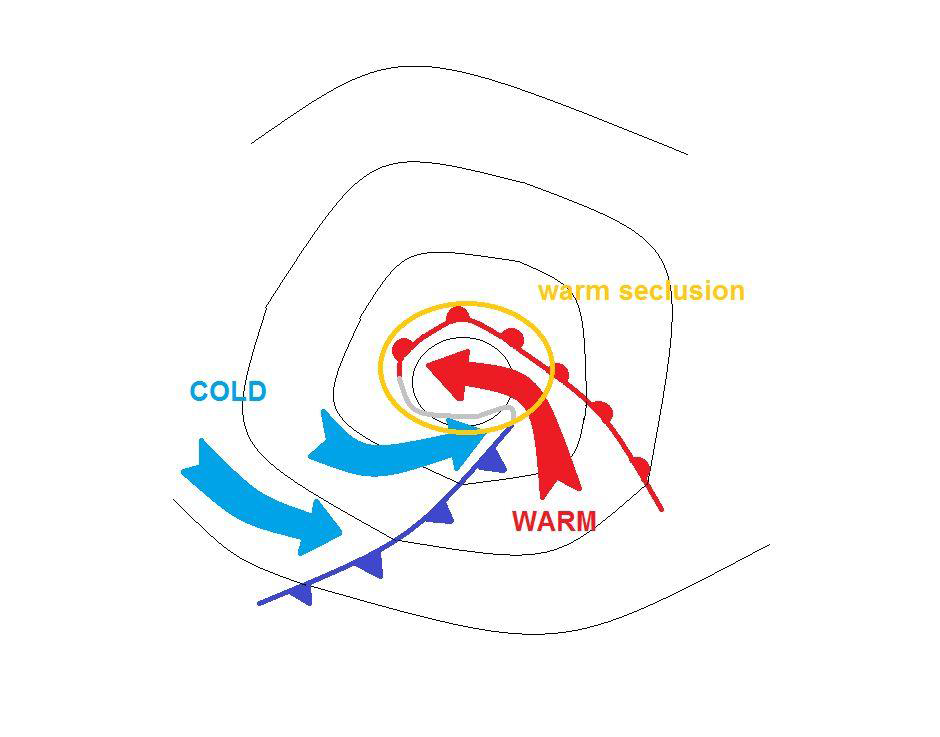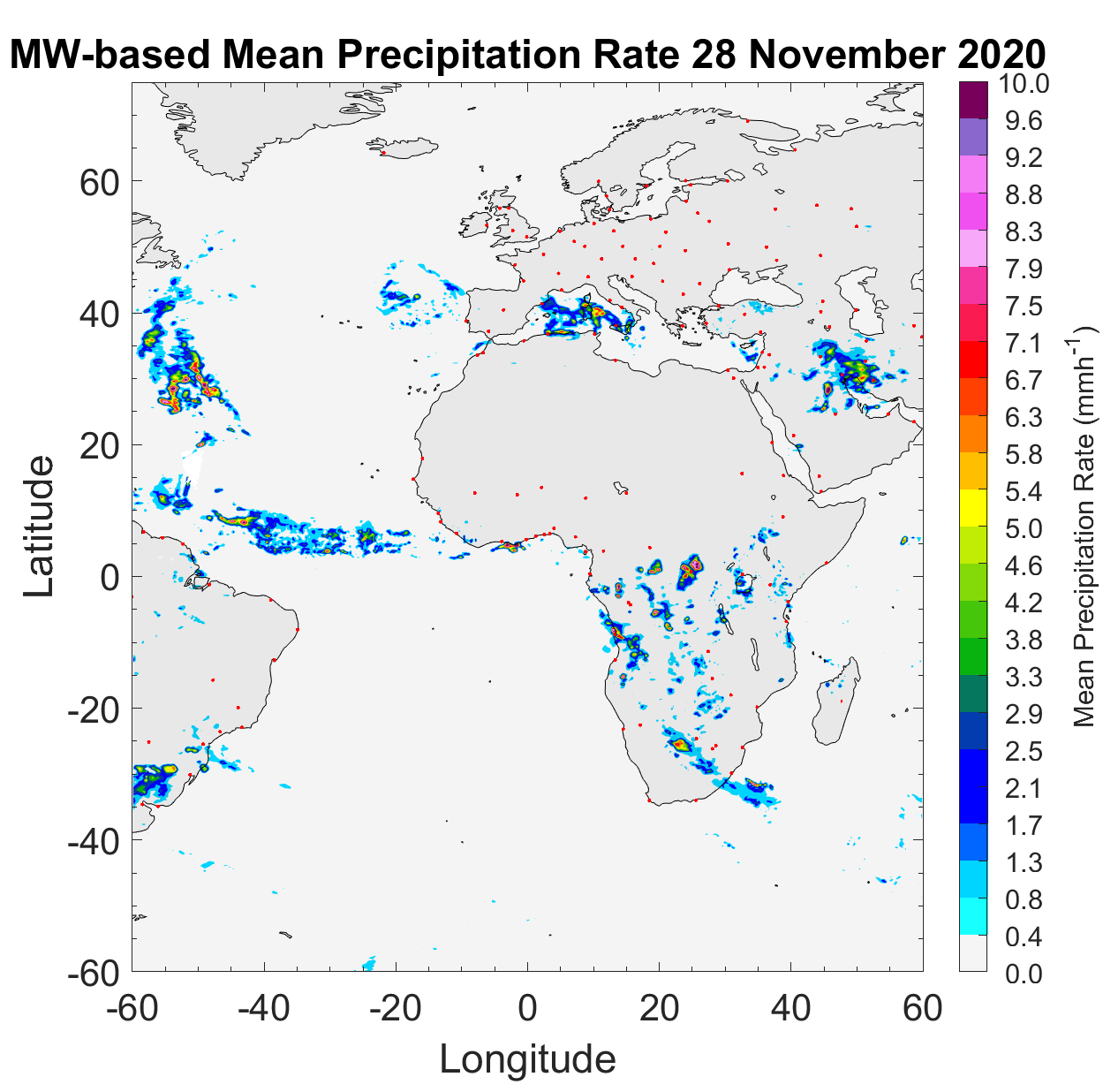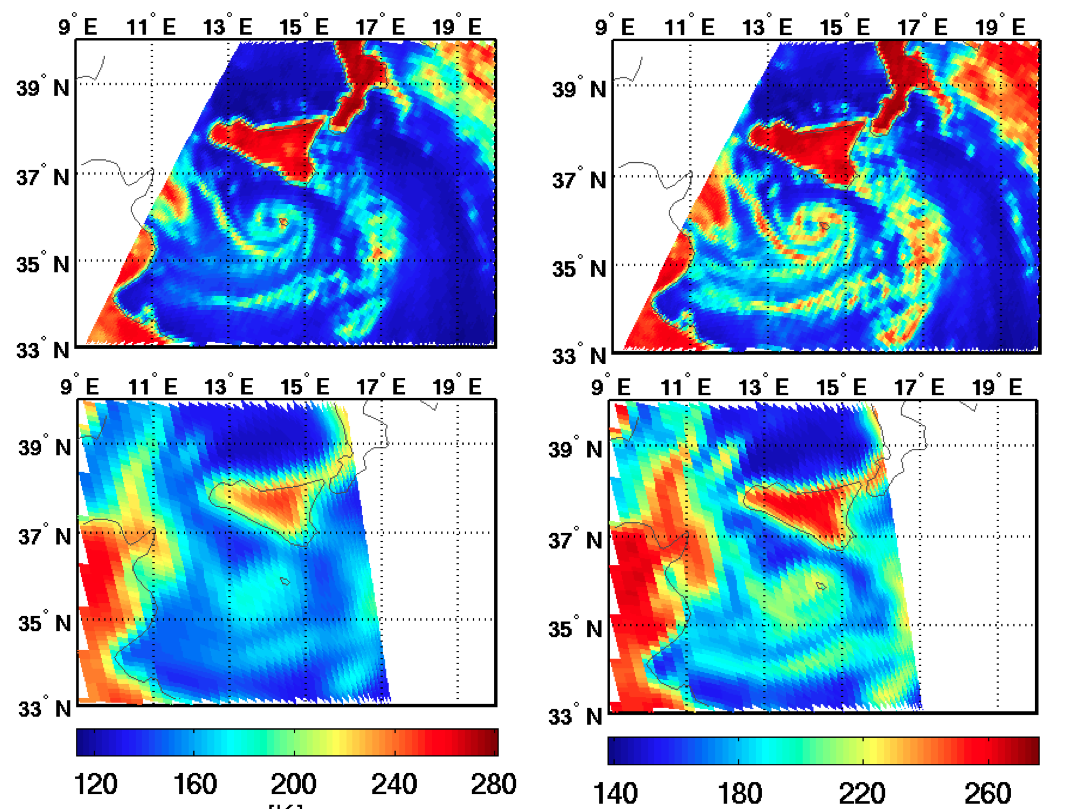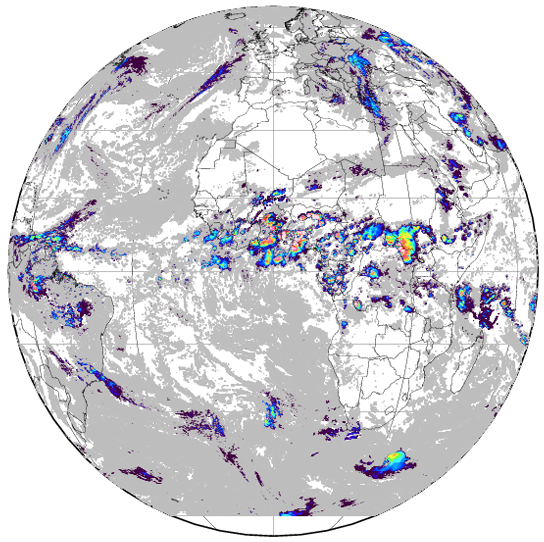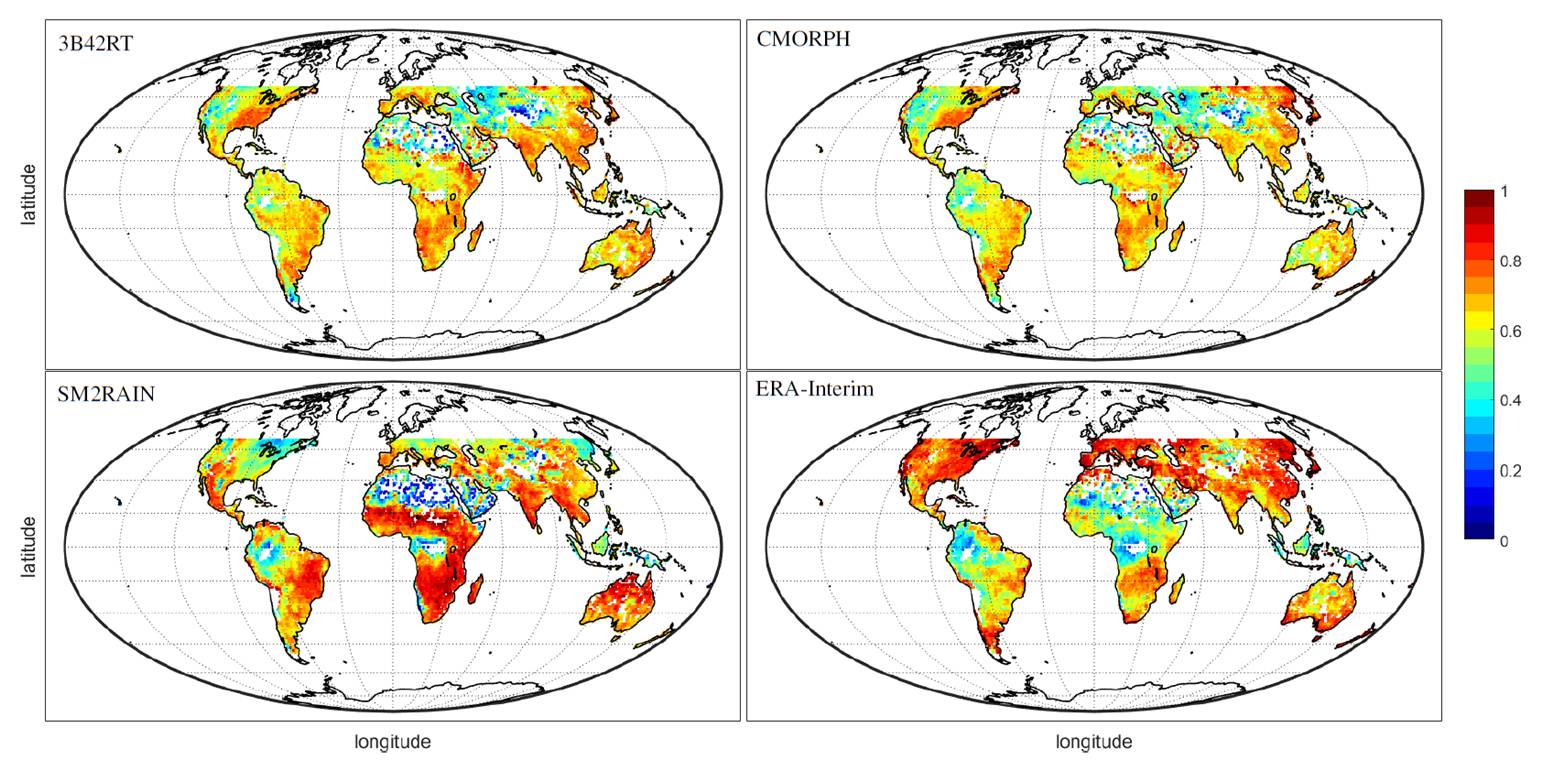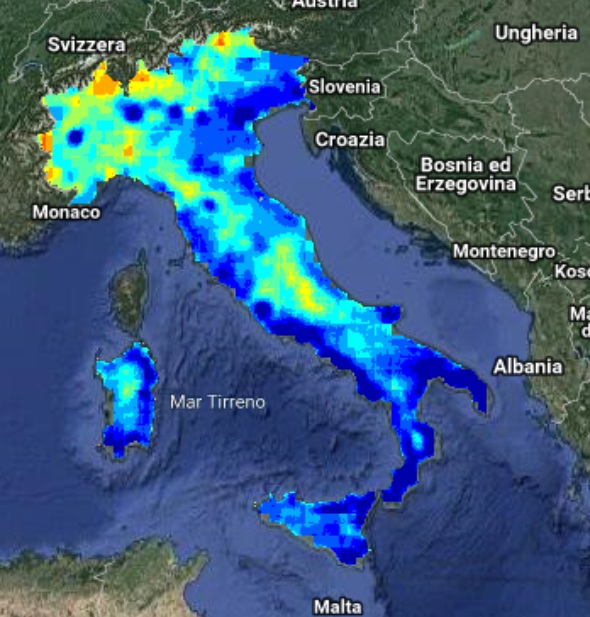Satellite skills and knowledge for operational meteorologist
Listed here are other resources related to Satellite skills and knowledge for operational meteorologist tag:
Note: click on an image to open the Resource
Presentation 11 in the Environment Event Week 2016
Length: 30 min
Author: Lee-Ann Simpson (SAWS)
South Africa is by nature a dry country, which has very short wet periods, mainly confined to the coastal areas and eastern half of the country. During the dry season, the hot, windy conditions result in a favourable environment for fires to spread uncontrollably and cause large scale damage to the local vegetation and to infrastructure. To be able to anticipate and forecast the risk of runaway fires in South Africa, a forecaster needs to have many sources of information, ranging from precipitation amounts to an understanding of the local vegetation. The inclusion of satellite imagery interpretation is an invaluable part of the forecasting process and the monitoring of fires can be done accurately and on a 24hour basis. This presentation will outline the risk the fires pose within South Africa and our forecasting processes dealing with this environmental hazard.
Presentation 12 in the Environment Event Week 2016
Length: 20 min
Author: Yonho Park (KMA)
In this presentation, we will show the result of detection of dust using COMS data. Several Asian dust cases will be presented and as well as some operation results.
Presentation 13 in the Environment Event Week 2016
Length: 30 min
Author: Delia Arias Arnold (ZAMG)
The eruption of Holuhraun in August 2014, in central Iceland, is the country’s largest lava and gas eruption since the Lakagígar eruption in 1783. Although very little volcanic ash was produced, large quantities of SO2 were released into the atmosphere. Two models have been used to simulate the dispersion and transport of SO2 for this event, the Lagrangian particle dispersion model FLEXPART and the on-line coupled model WRF-Chem. Whereas in the FLEXPART calculations no anthropogenic emissions or aqueous-phase chemical reactions are considered, in the WRF-Chem calculations, both are fully included. The results of the simulations are evaluated against satellite (GOME2B and OMI) data, as well as ground based SO2 concentration data. The analysis is conducted on a data management platform, which is currently developed in the frame of the ESA-funded project TAMP “Technology and Atmospheric Mission Platform”: it provides comprehensive functionalities to visualize and numerically compare data from different sources (model, satellite and ground-measurements).
Jose Prieto talks about solar channels, how to use them, what are the differences and where they are used for.
Length: 67 minutes
Author: Jose Prieto
In the session Jose talks generally about the solar channels, how to use them, what are the differences and where they are used. Later on the talk is about monitoring the vegetation and soil properties using the available solar and near-infrared channels. The presentation ends with examples of products for detecting dust and smoke.
In the frame of the 2020 SEEMET course, Andreas Wirth gave an overview talk on the conveyor belts theory.
Length: 15 minutes
In the frame of the 2020 SEEMET course, Andreas Wirth gave an overview talk on the conveyor belts theory. The three main conveyor belt types are explained and application examples are shown.
Andreas Wirth shows the main differences between the classical Norwegian cyclone model and the Shapiro-Keyser cyclone model.
Length: 110 minutes
In the frame of the 2020 SEEMET course, Andreas Wirth gave an overview talk on the two main mid-latitude low pressure systems: the classical Norwegian cyclone and the more recent Shapiro-Keyser cyclone. Both models were shown side by side and the main differences were pointed out. A real case example of both cyclone types illustrated the stages of the cyclones' life cycle. Finally, a quick overview was given on Sting Jets, a phenomenon that often accompanies Shapiro-Keyser cyclones.
Leo Pio D'Adderio presents two precipitation products based on passive microwave radiometry.
Length: 28 minutes
Passive microwave (PMW) radiometry is recognized as the most suitable for global precipitation monitoring and quantification. The H SAF precipitation products portfolio is being extended to provide Level 3 (gridded) PMW-based precipitation products to facilitate and promote the use of MW-based products for several applications. One of these products (labelled as P-IN-PWM, or H68) provides instantaneous precipitation rate estimates, based on calibrated and merged PMW Level 2 instantaneous precipitation rate products. H68 provides precipitation rate estimates every half hour, on a regular grid at 0.25°x0.25° resolution over the extended H SAF area (LAT 60°S – 75°N, LON 60°W – 60°E). The calibration is based on the precipitation estimates provided by the NASA Global Precipitation Measurement (GPM) DPR-GMI (Dual-frequency Radar and GPM Microwave Imager) combined product (2B-CMB). The H68 algorithm mainly consists of three modules (i.e. remapping module, adjustment module and merging module) that will be described. The other Level 3 PMW-based product that will be presented is P-DM-PMW (or H67), which provides as main output a 24 h mean precipitation rate based on the H68 product outputs. H67 provides data at the same spatial resolution as H68 at 00, 06, 12 and 18 UTC of each day for the previous 24 hours. Examples of H68 and H67 product outputs and applications will be provided.
Giulia Panegrossi provides an overview on the state-of-the-art of remote sensing techniques for precipitation retrieval.
Length: 34 minutes
The goal of this seminar is to provide an overview of the state-of-the-art of remote sensing techniques for precipitation retrieval exploiting Low Earth Orbit (LEO) microwave (MW) and/or geostationary (GEO) visible/infrared (VIS/IR) observations, analyzing their potentials and limitations, and perspectives in view of future satellite missions. The first part will focus on the description of the main space borne observing systems with focus on passive MW sensors on board LEO satellites, and on the basic principles of precipitation retrieval from space. Particular emphasis has been given to the NASA/JAXA Global Precipitation Measurement (GPM) mission, and to its Core Observatory launched on February 27, 2014, equipped with the most advanced space borne microwave imager (the GMI) and the first space borne dual-frequency (Ku and Ka-band) precipitation radar, providing semi-global (between 65°S and 65°N) 3-D view and retrieval of the precipitation (solid and liquid). The second part will focus on the main precipitation retrieval techniques and in particular on those used in the EUMETSAT Hydrology Satellite Application Facility (H SAF) precipitation products. Finally, in the third part a few applications of satellite precipitation products will be shown to highlight scientific challenges and future perspectives to improve precipitation quantitative estimation from space.
Silvia Puca gives an overview on H-SAF activities and products.
Length: 28 minutes
H SAF products and applications fit with the objectives of services, agencies, authorities and other initiatives which need information on water at the ground in order to monitor hazards and natural disasters such as flash floods, landslides and drought conditions, as well as to improve water management. From 2005 H SAF started to provide remote sensing estimates of relevant hydrological parameters: instantaneous rain rate and cumulated rainfall, soil moisture at surface and in the root zone, snow cover and water equivalent. All products are available via EUMETSAT data delivery service (EUMETCast), or via ftp download; they are also published in H SAF website h-saf.eumetsat.int. The project involves experts from 12 national meteorological and hydrological European Institutes of Austria, Belgium, Bulgaria, Finland, France, Germany, Hungary, Italy, Poland, Romania, Slovakia and Turkey, and from ECMWF.
Luca Ciabatta presents an algorithm that retrieves precipitation amounts from soil moisture measurements.
Length: 19 minutes
SM2RAIN is a novel algorithm that allows to estimate rainfall from a different perspective, using the soil as a natural rain gauge. The algorithm has already been applied to several satellite soil moisture products both on a regional and global scale, providing high-quality rainfall data. Moreover, soil moisture-derived rainfall estimates have been found to be complementary to state-of-the-art top-down precipitation products. In this way, the integration of the two different approaches provides a more reliable rainfall product. Within H SAF, the SM2RAIN algorithm has been applied to Surface Soil Moisture (SSM) data obtained through Metop platforms. The SSM-derived rainfall data are then integrated with the Level 3 PMW H67 product. In this way, the integrated product P-AC-SM2RAIN (labeled as H64) can provide daily rainfall estimates with a spatial resolution of 0.25°, over the extended H SAF area (LAT 60°S – 75°N, LON 60°W – 60°E).
Silvia Puca presents how H-SAF products can help in an early warning system.
Length: 22 minutes
Many severe meteorological events occurred in Europe during the last decade and caused casualties and damages to the historical heritage and natural environment. The European Civil Protection agencies, supported by meteorological and hydrological institutes, aim to assess risk scenarios, to monitor and supervise events and risk levels, providing early warning to National and local authorities. Near real time accurate estimations of hydrological variables such as precipitation and soil moisture are invaluable for the hydrological risk evaluation, enable them to issue early warnings and plan for disaster relief at the local level. Besides measurements of key hydrological variables by ground-based instruments, often affected by a limited spatial coverage, advanced satellite-based precipitation and soil moisture products developed within different international programs as H SAF, are available and accessible to users in near-real time. Severe meteorological events are selected in order to understand how the main satellite precipitation product characteristics, i.e. accuracy, spatial pattern and resolution, update frequency and latency, impact the efficiency of a hydro-meteorological early warning system at a local level in an operational framework.
Jan Kanak talks about comparing H-SAF products against ground truth data and shows some examples over Europe.
Length: 32 minutes
For proper usage of satellite products in meteorological applications it is necessary to take the set of skills which can be divided into technical, logistic and routine work with data, and final application of meteorological knowledge base by means of interpretation tools. Our lesson will provide step by step introduction to validation work with the H SAF precipitation products, introducing BUFR, GRIB and NETCFD decoding, reading and upscaling with the aim to put these various satellite products into common grid suitable for comparison against essential precipitation measurements considered as ground truth. Passing through the validation process and being aware of the accuracy of satellite products, we will show the applicability of these data using selected show cases over Central Europe. Case studies were prepared to demonstrate possibilities but also shortcomings of satellite data, which users need to take into account in practical usage. Because the proper preparation of satellite products is not important only for validation process itself, but also for practical applications, using show cases we will explain how to merge together various sources of precipitation information, e.g. irregular rain gauge point data, regular radar grid data, satellite scanned grids derived from microwave and infrared imagers. We will discuss the special treatment of continuous and discreet parameters like precipitation intensity or accumulated rain versus precipitation phase, quality index and surface type’s parameters to be up-scaled into common grid. Once up scaled data can be merged with the aim to obtain the most probable final values of instantaneous and accumulated precipitation fields. Final message of this training lesson addressed to meteorologists and hydrologists will be targeted to understanding that precipitation must be considered as stochastic parameter describing complex 3D processes in the atmosphere.

